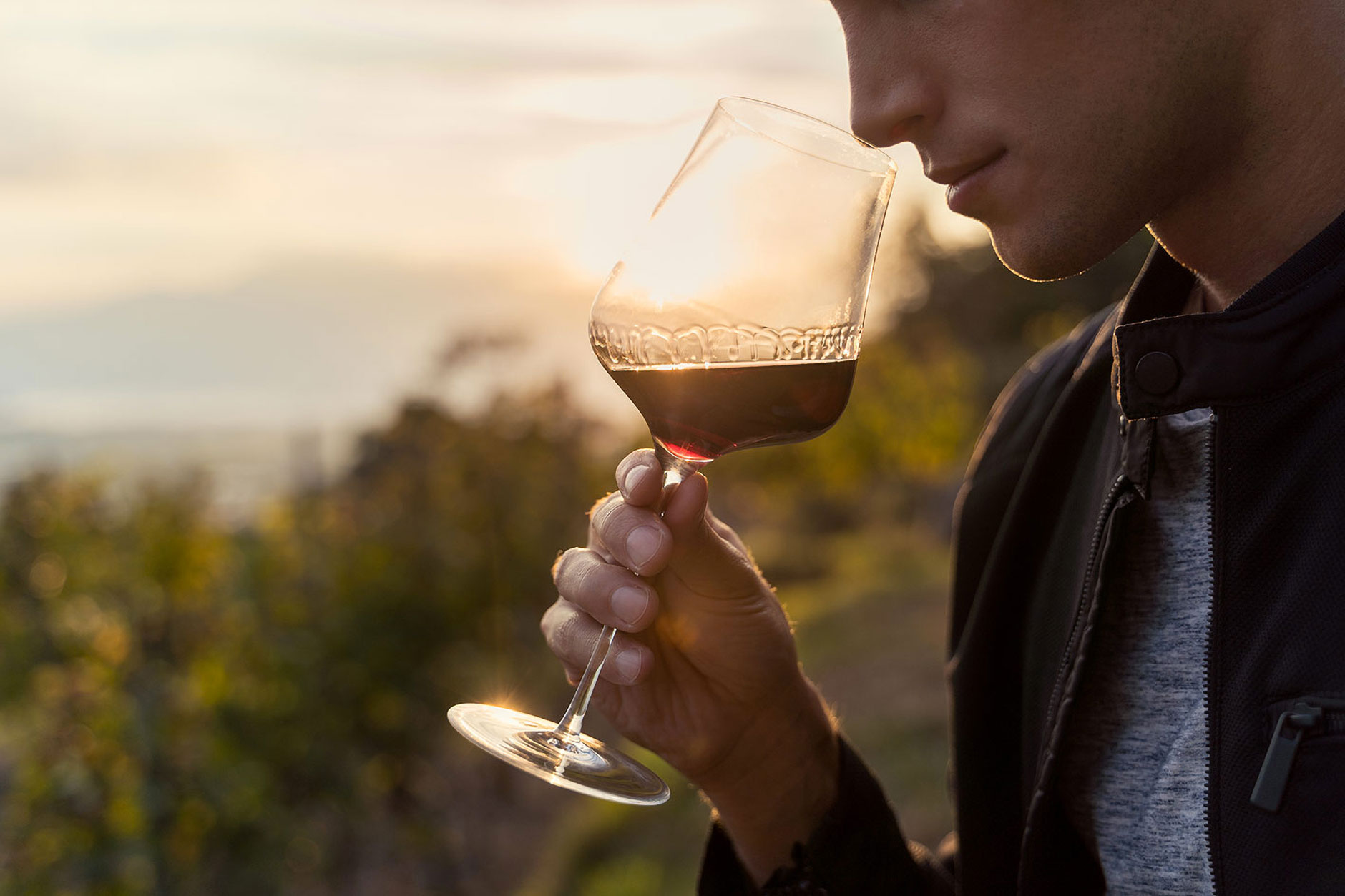How many times have you been to a wine tasting and heard about fruity, floral or spicy aromas? Perceiving and, above all, recognising the aromas of a wine is no trivial matter. The human sense of smell is 25,000 times more sensitive than that of taste, and our noses can distinguish over 400,000 odours, as opposed to the five main sensations on which our gustatory capacity is based. Yet we are untrained in this sensory activity, relying mostly on sight to understand the world around us.
But with practice and good will, it is possible to develop our sense of smell and make it more sophisticated.
But what exactly are these famous 'wine aromas'? Aromas are due to chemical compounds, i.e. odorous substances present in wine, which are classified by associating them with odours found in nature and already known.
We can therefore distinguish between three categories: primary, secondary and tertiary aromas.
Primary aromas
Primary aromas, also known as varietal aromas, are considered to be the typical aromas of the grape variety. They are in fact pre-existing in the wine and depend on the olfactory characteristics of the grapes used: contained above all in the skins of the grapes, they are transmitted to the wine during the phases of maceration and fermentation.
Different grape varieties therefore produce different scented grapes and consequently different wines. Some of these are particularly rich in aromatic substances: these give rise to so-called aromatic wines, characterised by a penetrating, characteristic and clearly recognisable aroma. A few examples? Gewürztraminer, Malvasia, Moscato and Brachetto.
The semi-aromatic varieties, such as Merlot, Riesling, Chardonnay, Müller Thurgau and Cabernet Sauvignon, are less strong in character but have an equally distinctive bouquet.
Secondary aromas
These are the aromas that the wine acquires during the winemaking process. They can be divided into pre-fermentative aromas, which originate during the pressing of the grapes and have a decidedly vegetal character, and fermentative aromas. On what do they depend? The type of yeast used, the winemaking techniques, the temperature in the cellar... All these factors together can significantly change the olfactory profile of a wine, giving it a more or less floral, fruity or vegetal character.
A wine in which floral notes prevail is certainly Bardolino: here the violet is the protagonist, accompanied by a good minerality conferred by the soils overlooking Lake Garda. Fruit, above all green apple and pear, comes out instead in the Fiano: intense and persuasive, perfect for a sea dinner.
Tertiary aromas
Here we come to the last stages of wine production, namely refinement, maturation and ageing. It is here that the so-called tertiary aromas develop, as a result of complex chemical and physical reactions. These processes first begin in barrels (or barriques or amphorae), and then continue in the bottle, giving rise to more spicy, roasted and intense aromas, such as those of cinnamon, cloves, tobacco, coffee and cocoa. These aromas are therefore typical of wines that require a long period of ageing such as Barolo or Brunello di Montalcino.
The importance of the choice of wood from the cask or barrique should also be emphasised, as it gives the wine its typical "boisé" and sweetly vanilla scent.
But the olfactory examination does not end here, even if the most difficult part, for an enthusiast approaching the world of tasting, is precisely the identification of aromas. To really understand a wine, it is necessary to evaluate its olfactory bouquet according to four characteristics: the intensity of the aromas, their quality, complexity and finally their nature.
Whether you are a neophyte or a seasoned connoisseur, there is only one way to improve your sense of smell: by trying! So let your curiosity run wild and train yourself by tasting different wines: by indulging your senses and following your instincts, you will have all the tools you need to make a complete olfactory assessment.
 Free Delivery from 69£
Free Delivery from 69£
